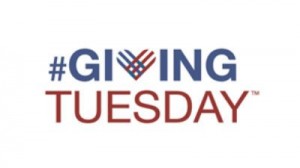Earlier this year, I stumbled upon a nonprofit organization via Facebook, and impulsively became a $10 a month donor. The mission had a strong personal connection for me, and I’m a big believer in the power of monthly giving.
Nothing happened.
 No instant thank you via email following my donation, no thank you letter. Weeks passed. No nothing. Now it’s six months later and my credit card is still dinged every month, yet I’ve yet to receive any acknowledgment from the organization or word on how my gift is changing lives.
No instant thank you via email following my donation, no thank you letter. Weeks passed. No nothing. Now it’s six months later and my credit card is still dinged every month, yet I’ve yet to receive any acknowledgment from the organization or word on how my gift is changing lives.
I’d love to report that this represents an isolated incident.
Unfortunately, it’s been my experience I’d guestimate over 60% of the time.
You might be asking “What do your personal experiences have to do with GivingTuesday?”
Just this: the very act of making a charitable gift IS, indeed, very personal.
Why do your donors give?
It seems to me that many nonprofit organizations are lacking the basic fundamentals and can’t answer this question that lies at the very heart of your fundraising and communications efforts. The last time I asked a client this question he said that their organization had a mission that every American would support. Um, no. You don’t.
The struggles facing nonprofit organizations today are much of their own making. We’re failing to pay attention to why our donors give, we’re failing to pay attention to the donors we have — and as a result, we’re simply losing donors at a faster rate than we are acquiring them.
There are those who think that “donor-centered fundraising” is just another buzzword in the nonprofit world. It’s not. I would venture to say that donor-centered fundraising is the healthiest – I would go so far as to say most honest – method to long-term, sustainable funding. It’s the very reason the 2013 BETA testing of my membership program began with the not-so-sexy topic of selecting your organization’s donor database…rather than, say, Fundraising on Facebook.
There are more distractions facing nonprofits than ever before.
Good God. You know it and I know it. They come from the rapidly expanding software marketplace where they’re using every trick in the marketing playbook. They come from a myriad of consultants looking to make a quick buck. And then along comes #GivingTuesday. Straight from the GivingTuesday site: “ a movement to create a national day of giving to kick off the giving season added to the calendar on the Tuesday following Thanksgiving, Black Friday, and Cyber Monday. The second annual GivingTuesday is on December 3, 2013. In the same way that retail stores take part in Black Friday, we want the giving community to come together for #GivingTuesday. We ask that partners create and commit to a project for/on #GivingTuesday and then help spread the word to their networks.”
In her post, GivingTuesday is a day, not a strategy, my friend, Mary Cahalane notes: “GivingTuesday does not have some special magic. And it really shouldn’t be your “strategy” for year-end giving.”
When you’ve focused your attention on your individual giving systems — the “Ask/Thank/Report/Repeat” donor communications processes you’re implementing throughout the year — you’re more focused on your donors. And less on a day.
Yet I also agree with my friend, the late John Haydon, who said:
“I’ll be the first to agree that social media stinks for fundraising – if you define fundraising as donations. Email converts much better than social media, and of course face-to-face converts best! That said, social media is about listening to and connecting with your community, which are critical parts of any fundraising relationship.
#GivingTuesday is a chance for nonprofits to learn how to integrate social, email, and other channels in a well-planned campaign. I think many of your points are important considerations for nonprofits, but not deal-killers in their #GivingTuesday participation.” (emphasis mine)
I’ve always concurred with Claire Axelrad who commented: “What I DO like using #GivingTuesday for is gratitude. And for this purpose it comes at a perfect time of year. The easiest thing for resource-strapped nonprofits to do is to send a thank you video –something super simple created on a smartphone and sent out via email or whatever social channels their supporters frequent — simply thanking folks for all their giving throughout the year.
Using #GivingTuesday for stewardship and/or the lead-in to your end-of-year campaign, rather than solicitation, makes sense if yours is an organization that has developed your “Ask/Thank/Report” fundraising systems.
Amen, Claire.
Would I tell you to avoid #GivingTuesday? Not necessarily. Here’s the deal: Before you decide if #GivingTuesday is right for your organization, ask yourself:
- Does my organization have the back-end systems in place to acknowledge and thank new donors promptly?
- How often and how effectively are we communicating with the donors we already have throughout the year?
- Can we use #GivingTuesday in a way that brings us closer to our donors? If so, how (Claire has answered that one nicely)?
Your overriding focus should always be on providing exemplary donor care. Every *opportunity,* should be approached from the perspective of “what’s in it for my donors?“

















 I can’t wait to meet with you personally.
I can’t wait to meet with you personally.
Comments on this entry are closed.